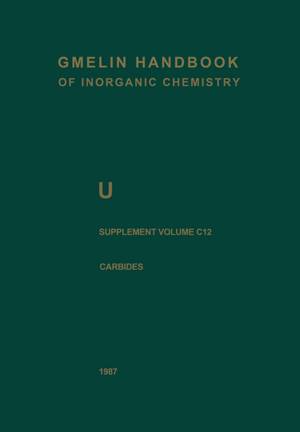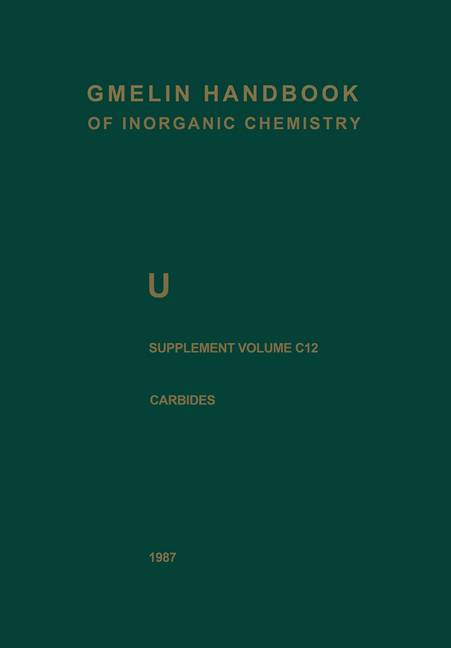
- Afhalen na 1 uur in een winkel met voorraad
- Gratis thuislevering in België vanaf € 30
- Ruim aanbod met 7 miljoen producten
- Afhalen na 1 uur in een winkel met voorraad
- Gratis thuislevering in België vanaf € 30
- Ruim aanbod met 7 miljoen producten
Zoeken
Omschrijving
The present volume Uranium C12 covers the binary and polynary carbides of uranium, including ternary carbides with nonmetals like the carbide oxides and carbide nitrides U(C,O) and U(C,N). The binary carbide UC and especially the mixed carbide (UO.80PUO.20)C are of special importance due to their potential as the fuel for advanced .. Fast Breeder Reactors" because of properties such as the short doubling time, the high fissionable material density, and the good thermal conductivity. On the other hand, the dicarbide UC is of interest for .. High 2 Temperature Reactors", especially in the form of the mixed carbide (U . Th . )C . For O80 o20 2 the first time, India used mixed uranium-plutonium carbide (U . PU .)C as the fuel for its O3 O7 own newly developed 15 MW Fast Breeder Reactor at Kalpakkam, south of Madras. el Because of the technological importance of the uranium carbides a lot of data were published only in reports. In most cases, it was the aim of these less-scientifically based studies to promote the carbide fuel development on an economical basis. The lack of analyti cal data on the purity of the samples, missing characterization of the present phases, etc., hQINever, does not allow the discussion of the results of such references in this handbook. Therefore, only reliable publications were cited. For the technical fabrication of uranium carbides and their irradiation behavior, see Volumes A3 and A4 of this Handbook.
Specificaties
Betrokkenen
- Auteur(s):
- Uitgeverij:
Inhoud
- Aantal bladzijden:
- 281
- Taal:
- Engels
- Reeks:
Eigenschappen
- Productcode (EAN):
- 9783662107188
- Uitvoering:
- Paperback
- Afmetingen:
- 170 mm x 244 mm

Alleen bij Standaard Boekhandel
+ 201 punten op je klantenkaart van Standaard Boekhandel
Beoordelingen
We publiceren alleen reviews die voldoen aan de voorwaarden voor reviews. Bekijk onze voorwaarden voor reviews.








